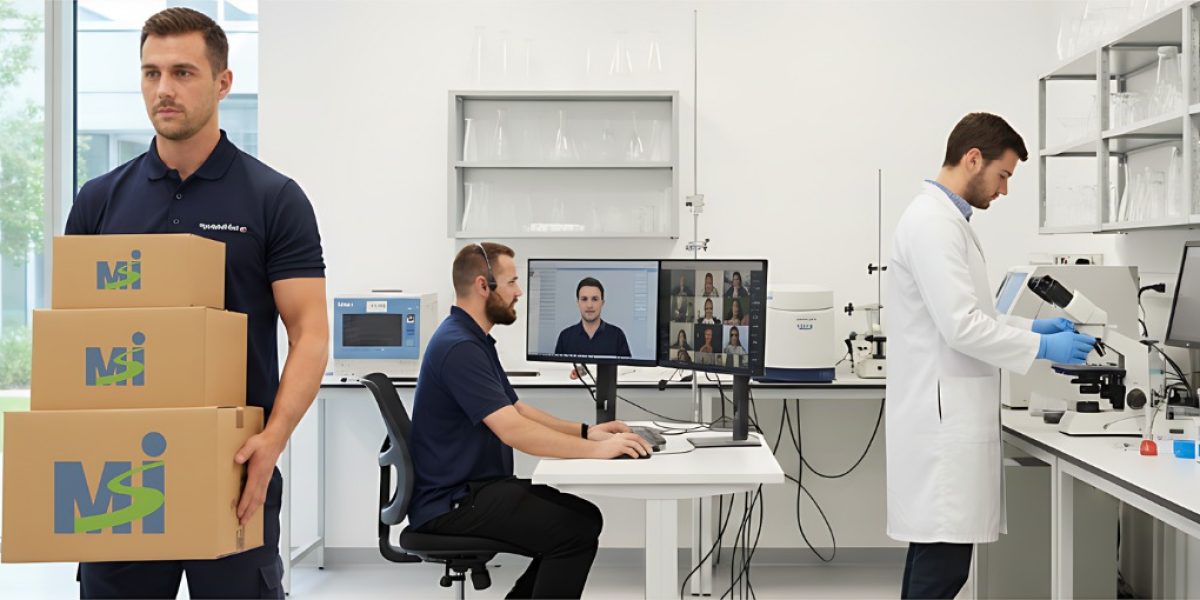Every Home Medical Equipment ( HME Asset Recovery Outsourcing )provider faces one ongoing challenge — managing, recovering, and maintaining assets efficiently after patient use. From oxygen concentrators to wheelchairs, these items are vital and costly investments.
Unfortunately, many providers lose thousands annually because of delayed retrievals, missing equipment, or inefficient recovery systems.
That’s where HME asset recovery outsourcing comes in — a strategic, scalable solution that ensures your medical assets are professionally retrieved, sanitized, tracked, and redeployed on time.
In this complete guide, we’ll explore how outsourcing transforms the HME recovery process, improves ROI, and enhances compliance and patient care — and why MSI Health Solutions is a trusted leader in this space.
What Is HME Asset Recovery?
HME asset recovery is the systematic process of retrieving, refurbishing, and redeploying home medical equipment after it’s no longer in use by a patient.
It includes:
- Pickup and transport from patient homes or facilities
- Inspection and cleaning following medical-grade protocols
- Repair, refurbishment, and calibration
- Inventory tracking and redeployment
This process helps providers maximize their existing inventory and reduce waste ensuring every device continues to generate value throughout its lifecycle.
Why Asset Recovery Is Essential for Providers
HME providers depend on timely equipment returns to keep operations running smoothly. Every unreturned oxygen concentrator, CPAP machine, or wheelchair represents not just lost revenue but also a gap in patient care continuity.
Proper recovery ensures:
- Improved inventory availability for new patients
- Lower replacement costs
- Enhanced regulatory compliance
- Optimized asset utilization
- Better cash flow and reduced waste
In short, effective recovery isn’t optional it’s a financial and operational necessity.
The Cost of Unreturned Medical Equipment
Studies show that HME providers lose 15–30% of their total asset value annually due to unreturned or misplaced equipment.
These losses accumulate through:
- Forgotten patient pickups
Damaged equipment during transit - Lack of tracking systems
- Inefficient in-house logistics
Each missing concentrator or hospital bed can cost hundreds or even thousands of dollars. Outsourcing ensures professional recovery networks and digital tracking systems prevent these losses.
Common Challenges in In-House Asset Management
Many providers initially attempt to manage asset recovery internally but quickly realize the complexity.
Typical challenges include:
- Limited staff and vehicles for pickups
- Poor visibility into asset locations
- Time-consuming coordination with patients
- Lack of consistent cleaning and testing standards
- Rising fuel and labor costs
Over time, these issues affect patient satisfaction, profitability, and compliance.
The Rise of HME Asset Recovery Outsourcing
As healthcare becomes more data-driven, outsourcing has emerged as the most effective way to streamline HME asset management.
Outsourced recovery providers handle the entire process from pickup to refurbishment allowing HME companies to focus on patient care and growth.
This approach combines expert logistics, compliance knowledge, and advanced technology to deliver better outcomes with less administrative burden.
Key Benefits of Outsourcing HME Recovery
Outsourcing delivers measurable benefits, including:
- Reduced Operational Costs: Lower fuel, labor, and administrative expenses.
- Improved Return Rates: Professional logistics increase asset recovery success.
- Regulatory Compliance: Outsourced partners follow HIPAA and FDA standards.
- Faster Turnaround: Recovered equipment is sanitized and redeployed faster.
- Data Transparency: Real-time reports keep you informed.
- Scalability: Adapt to patient growth without adding internal staff.
It’s not just about saving money it’s about transforming your logistics into a competitive advantage.
How HME Asset Recovery Outsourcing Works
The process of outsourcing is straightforward but powerful:
- Notification: The provider alerts the recovery partner that equipment is ready for pickup.
- Scheduling: The outsourcing partner contacts the patient and arranges collection.
- Pickup & Transport: Trained professionals retrieve and transport the device safely.
- Inspection & Sanitization: Equipment undergoes testing and medical-grade cleaning.
- Repair & Refurbishment: Any damaged components are replaced or repaired.
- Reporting: The provider receives digital confirmation and audit documentation.
- Redeployment: The asset is ready for the next patient or returned to inventory.
Each step is tracked for transparency, accountability, and compliance.
Steps Involved in a Professional Asset Recovery Process
A professional HME recovery service follows precise procedures:
- Inventory tagging using barcodes or RFID
- Pickup confirmation and chain-of-custody documentation
- Sanitization per infection control standards
- Functional testing and calibration
- Documentation for compliance audits
- Repair or eco-friendly recycling if reuse isn’t possible
This meticulous process ensures patient safety and maximum return on every recovered device.
Technology’s Role in Modern HME Recovery
Technology drives efficiency in every stage of outsourcing. Key innovations include:
- Cloud-based asset tracking systems
- GPS-enabled transport vehicles
- Mobile apps for real-time updates
- RFID tagging for accurate identification
- AI-driven analytics for asset performance insights
With automation, providers can monitor assets from pickup to redeployment — reducing loss and improving planning accuracy.
Compliance and Data Security in Outsourced Recovery
Compliance is non-negotiable. Every asset handled must adhere to HIPAA, OSHA, and FDA regulations.
Professional recovery partners implement:
- Secure data erasure for devices storing patient info
- Chain-of-custody tracking to ensure accountability
- Documented cleaning protocols
- Employee background checks and training
Partnering with a certified provider eliminates risk and ensures full legal compliance.
Environmental Impact of Responsible Recovery
Outsourcing also supports sustainability goals. Instead of discarding devices, they’re:
- Repaired and reused to extend lifespan
- Recycled properly if non-functional
- Disposed of safely following environmental standards
This reduces landfill waste and aligns providers with eco-conscious healthcare practices — a growing industry priority.
Financial and Operational Advantages
Beyond compliance and convenience, outsourcing recovery directly impacts the bottom line:
- Lower replacement costs through reuse
- Faster billing cycles due to asset turnaround
- Reduced capital expenditure
- Increased revenue from recovered equipment utilization
Providers typically see ROI within the first year of outsourcing asset recovery services.
Logistics Excellence: Pickup to Processing
An efficient logistics network ensures timely, traceable, and secure recovery:
- Patient scheduling with automated reminders
- Standardized packaging and labeling
- Trained medical couriers for equipment handling
- Tracking updates at every transit point
- On-time delivery to refurbishing facilities
These steps combine technology with human precision — ensuring reliability at scale.
Choosing the Right HME Recovery Partner
When evaluating outsourcing providers, consider:
- Experience in HME and DME asset recovery
- National coverage with local presence
- Certifications (HIPAA, ISO, FDA-compliant facilities)
- Technology integration with your systems
- Transparent SLAs and reporting
- Proven turnaround times
A trusted partner doesn’t just collect equipment they strengthen your entire operational chain.
Avoiding Common Mistakes in Asset Recovery Programs
To maximize success:
- Don’t neglect tracking or documentation it causes compliance gaps.
- Avoid uncertified logistics companies they pose legal risks.
- Never delay scheduled pickups it increases loss and storage costs.
- Always choose data-secure, compliant, and transparent providers.
Attention to detail in recovery programs protects both your patients and your business.
Case Study: Real-World ROI from Outsourcing
An HME provider in Texas managing 4,000 patients struggled with lost assets and delayed pickups.
After partnering with MSI Health Solutions for recovery outsourcing:
- Equipment return rates rose from 70% to 96%
- Recovery turnaround improved by 45%
- Labor costs dropped 30%
- Overall asset value retention increased 40% in the first year
This case demonstrates how strategic outsourcing transforms inefficiency into measurable growth.
Integrating Recovery Outsourcing into Provider Operations
To seamlessly integrate outsourcing:
- Automate equipment return notifications.
- Assign internal coordinators for communication.
- Use shared dashboards for tracking.
- Conduct regular performance reviews with your vendor.
When done correctly, outsourced recovery blends into your workflow, enhancing efficiency without disrupting operations.
The Role of HIPAA Compliance and Safety
Every piece of medical equipment may contain sensitive data or residue.
HIPAA compliant partners ensure:
- No patient information exposure
- Secure handling and documentation
- Certified sanitization procedures
- Proper disposal of data-enabled devices
This level of diligence safeguards your patients, staff, and organization.
Enhancing Patient Experience through Recovery Services
Patients appreciate convenience and professionalism. Outsourced recovery partners offer:
- Scheduled pickups at their convenience
- Clear communication and updates
- Respectful handling of medical equipment
- Fast turnaround for replacement needs
A positive recovery experience strengthens patient trust in your organization’s reliability and care standards.
The Future of HME Asset Recovery and Automation
The future of HME recovery is data-driven, automated, and sustainable. Expect to see:
- AI-based asset lifecycle predictions
- Smart logistics routing for faster pickups
- Predictive maintenance alerts
- Real-time compliance verification systems
By integrating AI and automation, providers can operate more efficiently while minimizing human error.
Why MSI Health Solutions Leads in HME Asset Recovery Outsourcing
At MSI Health Solutions, we understand the critical role asset recovery plays in patient care continuity and provider efficiency.
Our HME Asset Recovery Services Include:
- Nationwide pickup and recovery network
- Medical-grade cleaning and refurbishment
- Asset tracking and digital documentation
- Compliance with HIPAA, OSHA, and FDA standards
- Customized recovery solutions for hospitals, HMEs, and clinics
With years of healthcare logistics expertise, MSI ensures every recovered asset is safe, compliant, and ready for redeployment — giving providers confidence and cost savings at every stage. Efficient HME asset recovery outsourcing is no longer just a convenience — it’s a cornerstone of modern healthcare logistics. By partnering with experts like MSI Health Solutions, providers gain visibility, compliance, and financial control over their equipment lifecycles. From retrieval and sanitization to refurbishment and redeployment, outsourcing ensures every asset adds value — not cost. If you’re ready to transform your medical equipment management, MSI Health Solutions is your trusted partner for professional, compliant, and scalable HME recovery services.







